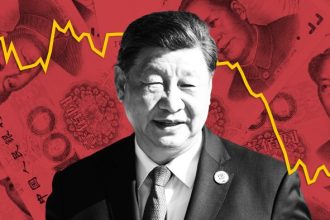Investing.com – Oil bulls pressed ahead Monday with the momentum they had gained in the past three weeks, closing in on the Saudi wish for triple-digit pricing, as markets awaited the Federal Reserve’s verdict on U.S. inflation creeping again from high energy costs.
The Fed’s policy-makers aren’t expected to raise interest rates when they meet on Sept. 20, after 11 hikes that added 5.25 percentage points to a base rate of just 0.25% in February 2022.
But what Chairman Jerome Powell says at his news conference on Wednesday will be closely watched for clues on Fed think for the rest of the year, especially with two more policy meetings on the schedule for November and December.
For context, the headline reading for the U.S. rose for the second month in a row in August, reaching a year-on-year growth of 3.7% from 3.2% in July.
That was largely due to high pump prices of gasoline which accounted for more than half of the increase — a phenomenon that could put renewed pressure on inflation fighters at the Fed. The central bank’s desired inflation remains at a max 2% per year and it has vowed to get there with more rate hikes if necessary.
Global interest rate decisions due this week
Beyond the Fed, markets are also awaiting rate decisions from the Bank of England, the People’s Bank of China and the Bank of Japan this week.
The BOE is expected to hike interest rates by 25 basis points, while the PBOC and the BOJ are expected to keep rates on hold. But any signals on future policy, particularly from the BOJ, will be in focus, given that several members of the Japanese central bank flagged a potential end to its negative rate regime.
In China, the PBOC is expected to keep its loan prime rates on hold as it struggles to strike a balance between supporting an economic recovery and preventing further weakness in the yuan.
The pivotal week for global central banks comes after the ECB raised rates by 25bps last Thursday, bringing its benchmark rate to an all-time high of 4.50%.
With two hours to Monday’s settlement, New York-traded West Texas Intermediate, or , crude was at $91.09 per barrel by 12:30 ET (16:30 GMT), up $1.07, or 1.2%, on the day. The U.S. crude benchmark rose to $91.30 earlier in the session, its highest since November. Last week, WTI finished up 3.7%, adding to prior back-to-back weekly gains of 2.3% and 7.2%.
London-traded was at $94.73, up 80 cents, or 0.9%. The global crude benchmark hit a 10-month high of $94.95 earlier. Brent finished last week up 3.6%, adding to prior back-to-back weekly gains of 2.4% and 4.8%.
“This oil rally has been relentless and I’m not seeing any signs of exhaustion yet,” observed Craig Erlam, analyst at online trading platform OANDA. “A 15% rally in the space of around three weeks to trade at levels not seen since last November and not far from triple figures.”
But Erlam also noted that in spite of the Saudi pursuit to recapture the $100-a-barrel mark it lost more than a year ago — an obsession joined lately by the Russians — “the price hasn’t risen as much as thought.”
“Is this a sign of cuts going a step too far or will demand weaken to the point of prices pulling back again?” the analyst questioned, adding that there were a host of unknowns for the global outlook in 2024.
Tamas Varga of oil broker PVM said another uncertainty in the coming months was over inflation and whether persistently rising oil prices would unravel the work done by the Fed and other central banks in bringing price pressures down from post-pandemic highs.
“Investors, however, remain puzzled over when central banks will start cutting (rates),” Varga said in comments carried by Reuters. “The high-for-longer mantra would ultimately have a negative impact on economic growth and would affect oil demand.”
(Peter Nurse and Ambar Warrick contributed to this item)
Read the full article here





